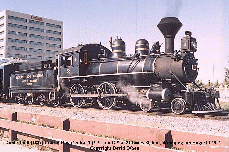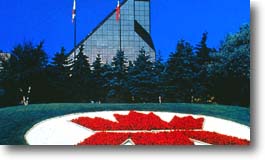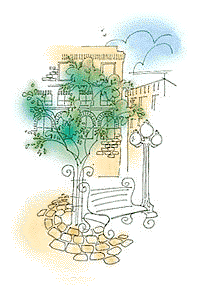

Formally opened on July 15th, 1920, the 50thanniversary of Manitoba's entry into Confederation, the Manitoba Legislative Building was designed by the English architectural firm of Frank W. Simon and Henry Boddington III.
A paramount example of BeauxArts Classical architecture in Manitoba, the structure is sheathed in Manitoba Tyndall limestone and is adorned with many allegorical works of art.
The building accommodates the Legislative Chambers, LieutenantGovernor's suite, offices of the Premier and Cabinet Ministers and some departments of the government.
A Manitoba Heritage Council plaque and the original plaque dedicated at the Building's opening are located in the foyer. Plaques dedicated to prominent Canadian historical figures Pierre Gaultier de Varennes et de la Verendrye, Major General James Wolfe, the Fifth Earl of Selkirk, and Lord Dufferin, are located just outside the east and west entrances.
The beautiful grounds of the Legislative Building contain many statues in memory of prominent persons, such as Queen Victoria, Lord Selkirk, founder of the first European settlement in Manitoba, French Canadian explorer La Verendrye, MajorGeneral James Wolfe, Lord Dufferin, the first GovernorGeneral of Canada to visit Manitoba after the province joined confederation, Robert Burns, Sir George Etienne Cartier, who piloted the bill to bring Manitoba into the confederation through the House of Commons, Jon Sigurdsson, Icelandic man of letters, and Ukrainian poet and painter Taras Shevchenko.
On the banks of the Assiniboine River near the Legislative Building, stands a monument of Louis Riel, Metis leader.
The Kwakiutl totem pole stands nearby, a gift from the people of British Columbia to commemorate their Centennial in 1971.
Tourist parking is available in the Legislative Building grounds.
Access to the river walkway is also available from this site.
Tours are available from Monday to Friday and 8:30 a.m. to 4:30 p.m.
Telephone 1-204-945-5813

Atop the 240 foot high dome of the Legislative Building at Broadway and Osborne Street is one of the best known symbols of Manitoba.
The Golden Boy, finally erected in 1919 after spending World War I criss-crossing the Atlantic in the bottom of a troop ship, stands for 2 distinct things - Equality for All and Freedom Forever.
The torch held aloft in his right hand lights the way of future economic development and progress in the north, while the sheaf of wheat cradled in his left arm represents agriculture.
This four metre (13 foot) figure, weighing five tons, was cast in bronze by the French sculptor Georges Gardet of Paris. It is now sheathed in 23 carat gold.

A Manitoba Heritage Council plaque describes the history of the official residence of the LieutenantGovernor of Manitoba, a second Empire style building constructed in 1883.

Prairie Dog Central
Steam Museum Train
Step into yesteryear and become part of the world of wooden coaches, smoke, steam and cinders. The Prairie Dog Central train is made up of 5 coaches built between 1901 and 1913, pulled by an engine built in 1882.

This plaque was erected in recognition of two East Kildonan residents, Dan Starkell and son Dana who launched their canoe at the park in June, 1980 and paddled over 12,000 miles to Belem, Brazil. This has been recognized as a world record for the longest journey undertaken by canoe.

One of only two government coin mints and the most modern mint in the world, the Royal Canadian Mint produces Canadian coins as well as coins for many other countries around the world. The Winnipeg Plant produces all of the circulation coinage for Canada. In addition to producing over 30 million loonies annually, the Royal Canadian Mint also produces coins for up to forty countries around the world.
From the gallery, visitors can view the different production steps in the coin making process.
Guided tours available commencing May to August (inclusive), from 9:00 a.m. - 4:00 p.m., Monday to Friday. Closed on statutory holidays.
Admission charged.
Make appointments for groups of 10 or more.
For more information telephone 1-204-257-3359.
(Did you know the Canadian dollar is divided into 100 cents? A cent is represented by a copper penny, five cents by a nickel, ten cents by a dime, and twenty-five cents (a quarter of a dollar) by a quarter. The one and two dollar paper bills have been replaced by coins, the one dollar "Loonie" and the two dollar "Twoonie".)

Winnipeg's historic Exchange District was the heart of the new prairie city which grew up around the fort at the junction of the Red and Assiniboine rivers. From the first store built at the corner of the Portage and Lower Fort trails, the area quickly expanded to include hotels, saloons, a grain exchange and newspaper publishers.
Famous for the finest collection of turn-of-the-century warehouses and commercial buildings in North America, it derives its name from the many stock and commodity exchanges developed between 1880 and 1920.
The Winnipeg Stock Exchange, Commodity Exchange and Winnipeg Grain Exchange form the core of what still is the city's major business centre.
Today it's the centre of the performing arts in Winnipeg and unofficially known as The Theater District. The Royal Winnipeg Ballet and the Winnipeg Symphony Orchestra perform at the Centennial Concert Hall, located at the corner of Main and Market. The Manitoba Theater Centre, MTC Warehouse Theater and the Pantages Playhouse Theater, built in 1914, are located
within 3 blocks of each other.

The District is also home to the visual arts community and numerous galleries, studios and workshops are located in the historic buildings.
In the heart of the exchange are the Manitoba Museum of Man and Nature as well as the Ukrainian Cultural and Education Centre.
The District is also a shoppers' paradise, its cobbled streets lined with shops of every kind.
The architectural charm of the area remains, and you can take a walking tour by calling 1-204-986-6937.
The money that built the West was made on the floor of the Winnipeg Grain Exchange. It opened in 1887 as agricultural business boomed. Today the Grain Exchange, renamed the Winnipeg Commodity Exchange, and Canada's only agricultural futures and options exchange, remains a key player in the world grain trade.
It is the oldest and largest futures exchange in Canada.
Visitors are welcome to view trading from the fifth floor gallery during market hours (9:30 a.m. - 1:20 p.m. Monday - Friday)
Group tours should be pre-booked for tour presentations.
For information call: 1-204-949-0495
A giant, five-and-a-half-storey high screen wraps you in the splendor and beauty of every scene filmed.
Features are often on a nature and/or science theme.
For information call: 1-204-956-4629

This operating train station is now used by VIA Rail. Its architects were the New York firm of Warren and Wetmore, the designers of New York City's Grand Central Station.
For information call 1-204-949-7400
The CPR Station was built in 1904 to replace a previous structure which burned down in 1894. The station played a critical role in Winnipeg's development, providing both economic and population growth. Designated a National Historic Site, the CPR Station stands as a reminder of days gone by, holding many memories for Winnipeggers and Western Canadians.
Today, as the ABORIGINAL CENTRE of WINNIPEG INC., the former station, stands not only as a reminder of Winnipeg's rich history but as an icon to the deep commitment to the community felt by the Aboriginal people in Winnipeg.
These are among the largest privately owned railway yards in the world and should be of particular interest to railway buffs.
The yards may be seen to advantage from either the Slaw Rebchuk or Arlington Bridges.
The marshalling yards of the Canadian National Railways may be seen from the TransCanada Highway on the eastern outskirts of Winnipeg.
The fully automated switching system, involving electronic equipment, computers and closed circuit TV, is the most modern in the world.
The yards are a striking sight at night when the extensive floodlight system can be seen for miles.